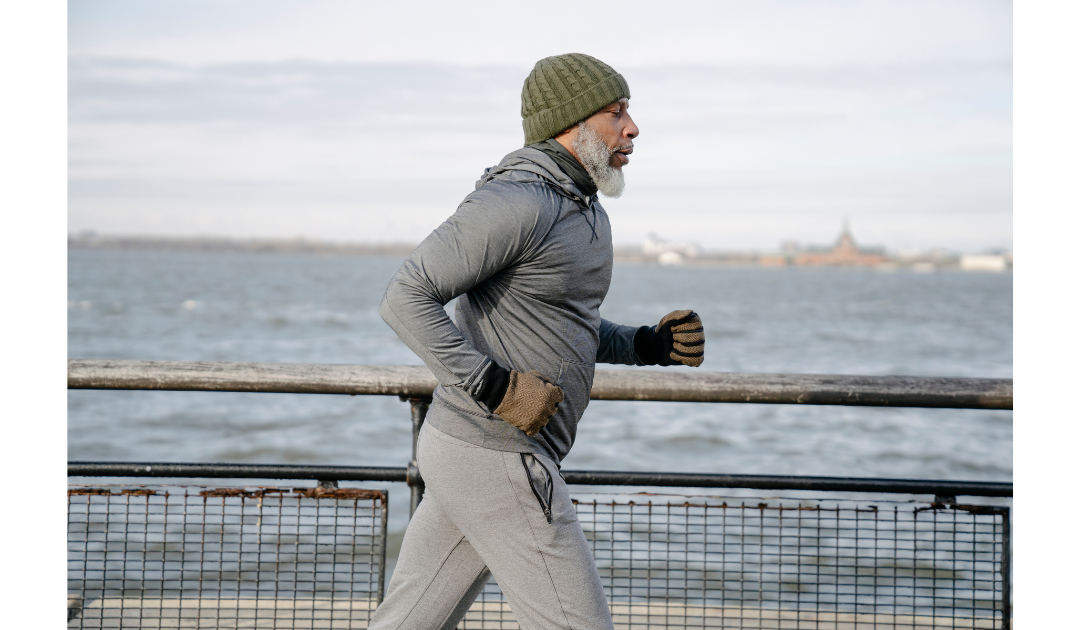Loving life as I do, the Queen song ‘Who wants to live forever?’, written for the fantasy movie Highlander about an immortal Scottish swordsman, sometimes pops into my head and I wonder what my answer would be? … The bad news is of course that it’s not an option – I am a mere mortal who will decline as the years go by …. but the good news is that the inevitable ageing process can be slowed down if I train to boost my aerobic capacity.
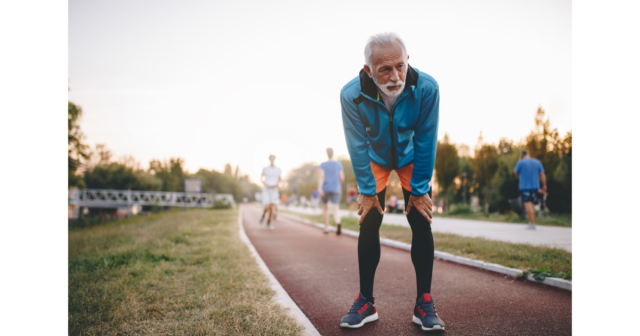
Interval workouts can slow the ageing process
VO2max
Aerobic capacity, otherwise known as VO2 max, is a measure of the volume of oxygen your body can use per kilogram per minute (mL/kg/min) during intense exercise and the higher your score, the better your ability to sustain endurance activity. Studies have shown that the key to longevity is linked to your level of VO2 max and an example of this research is published in the Journal of the American College of Cardiology showing that participants with the highest VO2 max lived about five years longer than those with the lowest. (1)
After the age of 25 our VO2 max gradually decreases at the rate of 10% per decade and between the ages of 50 and 75 this rate can be up to 15% per decade. (2)
There are many reasons for this decline: our hearts naturally begin to stiffen as we get older and the pumping action becomes less powerful making it harder to fill maximally with blood. To add insult to injury, the carrying capacity of our blood vessels decreases as they become corroded and blocked with fatty deposits. Like a Catch-22 scenario, this decrease in VO2 max fuels the tendency to become less active as we get older; as it is harder to sustain high quality training when our physiological recovery slows down, perhaps increasing risk of injury.
Being less active means that muscle mass will decline while body fat tends to increase, which isn’t good news for VO2 max since carrying more weight will adversely affect your score. All of this contributes to a reduction in performance and perhaps less motivation to remain active.
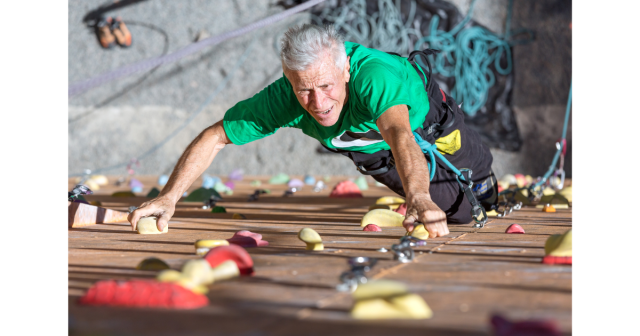
Being active means that muscle mass will improve while body fat decreases
A study carried out by Dr Michael Pollock in 1987 found that athletes who remained active maintained their average VO2 max, while the VO2 max values of less active participants fell by 12%.
Marc Rogers went further with a study that looked at 18 well-trained active veteran athletes and 14 inactive, lean and healthy veterans, as control subjects. Rogers found that the inactive group had a 12% decline in VO2 max per decade while the active veterans showed only a 5% decrease per decade. Interestingly, Rogers concluded that half of the decrease in aerobic capacity is due to ageing, while the other half is due to inactivity. (3)
How can you work out your VO2 max?
You’ll probably want to know what your starting point is before you look to maintain or improve your level.
A VO2 max test is very high intensity and you should make sure you have someone on hand to monitor you. It should not be undertaken if you have any health issues that would put you at risk and if you’re not sure, you should seek medical advice before attempting it.
The most accurate and safest way to test VO2 max is to go for a cardiopulmonary test in a laboratory. There you would be asked to perform a cardiovascular task, such as running on a treadmill or riding a bike, incrementally building to your maximum effort. You’d wear a mask over your face to record your oxygen consumption and carbon dioxide production.
This type of test can be expensive and you may prefer to use one of the ‘do-it-yourself’ methods. These will give you a general idea of what your VO2 max is likely to be, though it will be a less reliable training aid. One method involves finding your maximum heart rate (MHR), dividing this by your resting heart rate (RHR) and then multiplying the answer by 15.
How do you find your MHR?
The standard way to work this out is to subtract your age from 220; so a 40 year old’s MHR will be 220 – 40 = 180 beats per minute (bpm). This will give an indication of what you might expect as your VO2 max, but is not specific to the individual. A more reliable way to find MHR has been devised by scientists at the University of Kent, which assumes access to a treadmill and a heart rate monitor. After a warm-up, the test is just ten minutes long with heart rate monitored while the intensity of effort is increased using Rate of Perceived Exertion (RPE) every two minutes, through Light/Somewhat Hard/Hard/Very Hard/Maximum. (4)
VO2max Tests
The Cooper test (5) is a DIY option for runners to work out their VO2 max and it’s easy to perform with a limited amount of equipment. After a 20-30 minute warm-up run, you need to run for 12 minutes, ideally around a 400m track, covering as much distance as possible. VO2 max is then calculated as follows:
Kilometres: (Your distance in km X 22.4) – 11.3 Miles: (Your distance in miles X 36) – 11.3 e.g. if you cover 2700m, your estimated VO2 max would be (2.7 x 22.4) – 11.3 = 49.2
Other examples of VO2 max tests you may want to look into include the Rockport Walking Test, the 1-mile Jog Test, The Rowing Step-Test and the YMCA Cycle Ergometer Test.
Some smartwatches can also monitor your VO2 max by combining data on your RHR, age, gender, weight and pace, but note that these are only an estimate of your actual aerobic capacity and these scores should be treated with caution. (6)
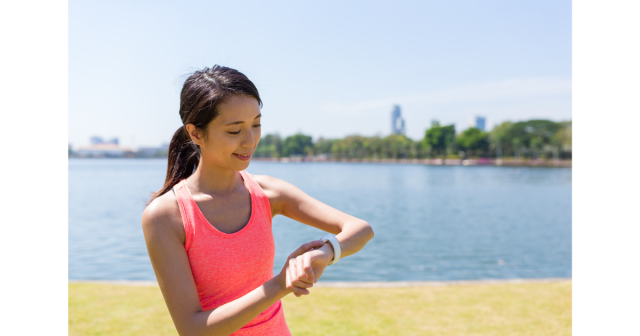
Studies show that the new VO2max watches are more accurate for those in the mid-range of aerobic capacity
What’s a good VO2 max result for my age and gender? (7)
Women

Men

How can you maintain or even improve your VO2 max?:
As people get older, many find it more comfortable to settle at a steady-state pace in their chosen activity. This puts less stress on joints, recovery is quicker than after more intense sessions and it serves to improve endurance.
However, research has shown that combining endurance training with interval training at a higher intensity is the way to elicit improvement in VO2 max – the gains being greatest following the more intensive training. (8)
Intensive means working at 90-95% of your MHR with short periods of this being alternated with short periods of rest. Alternating training styles in your regular schedule also keeps things fresh and fends off boredom and overuse injuries.
Depending on your level of fitness you have the freedom to decide the intervals that will suit you. Research has shown that intervals of 3-5 minutes are optimal for VO2 max improvement with a ratio of 1:1 / work:rest. (9) A 3-minute interval is long enough to achieve an effort above 90% of your VO2 max, while maintaining this for more than 5 minutes makes it too hard to sustain.
All this tells me that although I am not immortal, I still have the power to age well, like a fine wine or cheese, and maturity doesn’t need to be a downward spiral.
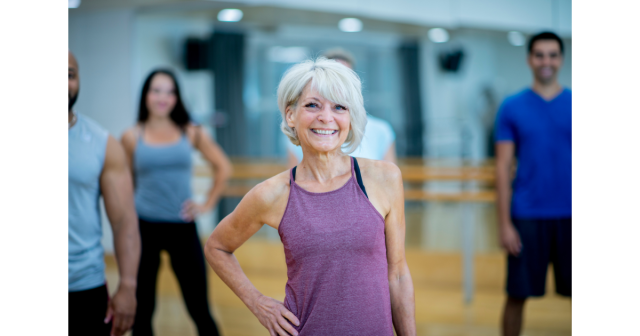
Boost aerobic capacity to put the brakes on ageing
My tips to maintain your VO2 max:
- Keep up a regular training schedule
- Alternate interval training (1-2 times a week) with steady state endurance training
- Use intervals of 3-5 minutes with a ratio of 1:1 work:rest
- Keep challenging yourself – when it becomes easy, push yourself to include an extra interval
- Vary training to keep injury at bay
REF:

